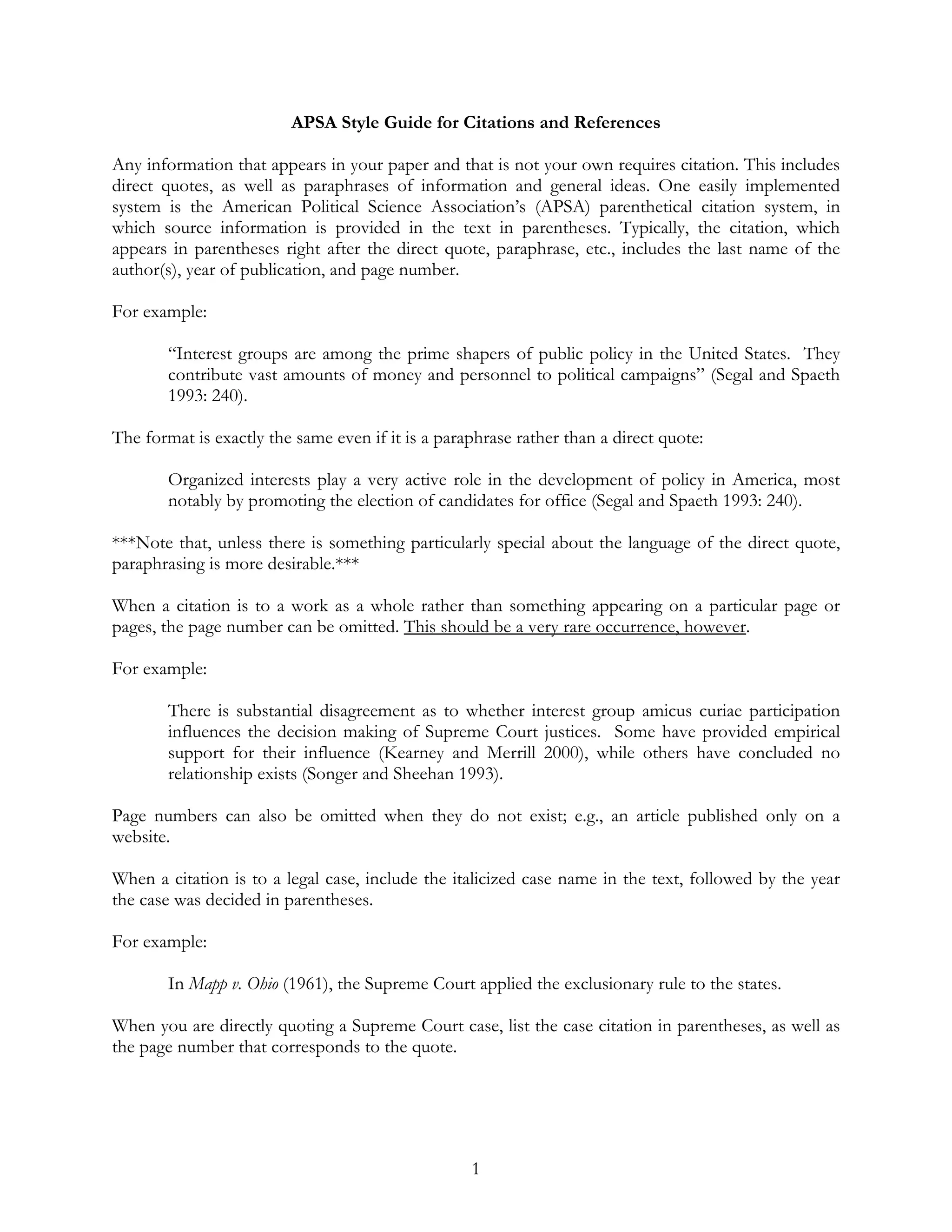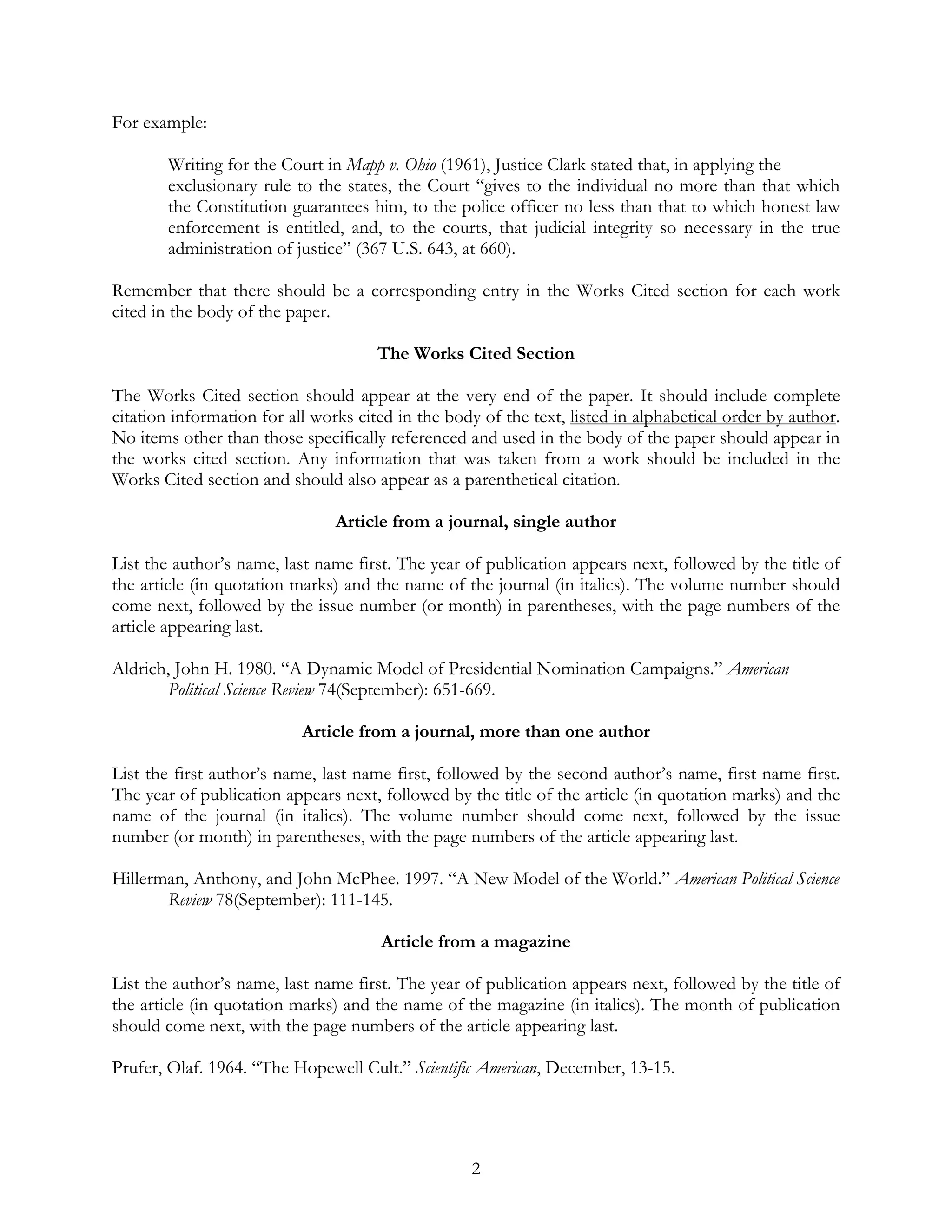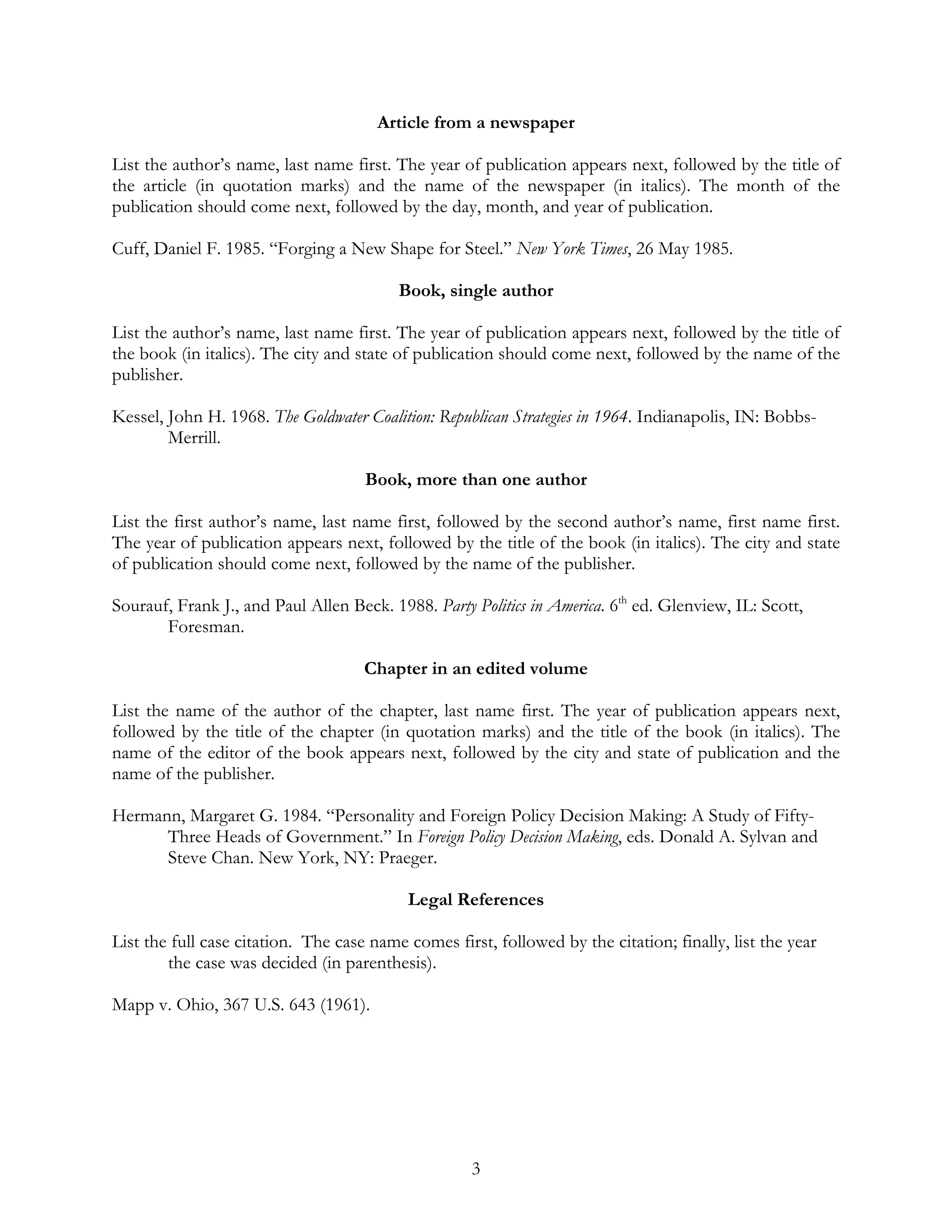The document summarizes the American Political Science Association (APSA) style guide for citations and references in research papers. It provides guidelines for citing sources in the text using parenthetical references as well as formatting the works cited section at the end. Key guidelines include providing the author's last name, year of publication, and page number in parentheses after a quote or paraphrase. The works cited section lists all cited sources alphabetically with detailed information like author, title, publisher for different source types such as books, articles, websites.



